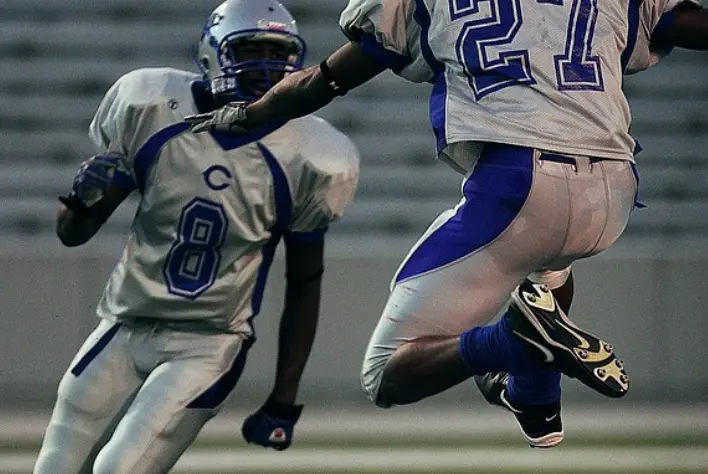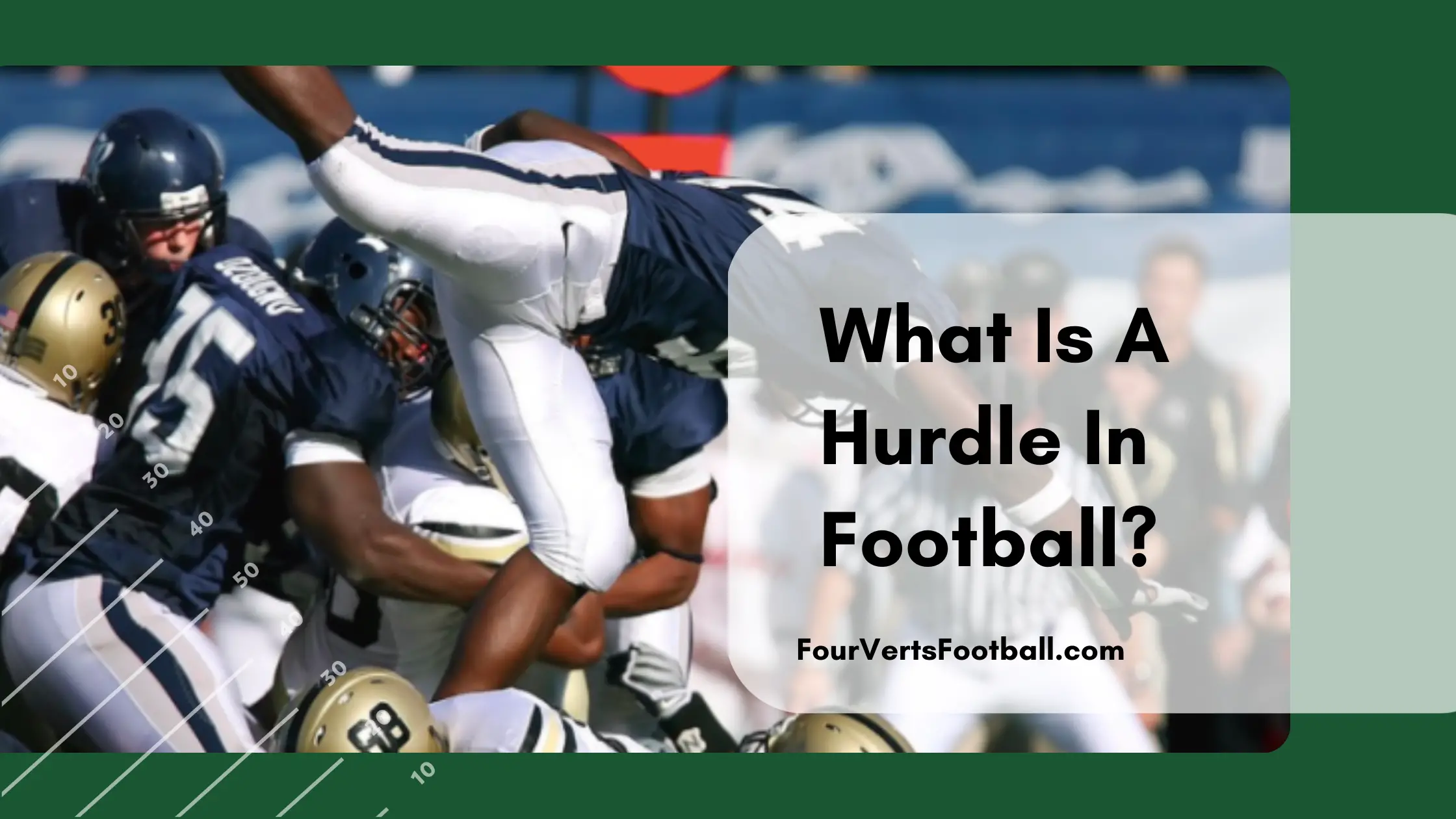A hurdle in football occurs when the ball carrier jumps overtop of a defender that is contacting the ground with only their feet.
If a hurdled player has his knees or arms resting the ground this is no longer considered a hurdle according to the rulebook.
Is Hurdling illegal in football?
Hurdles in football are considered legal or illegal depending on which league you are playing in. At the highest level of this sport, you will find hurdles are legal.
The NFL for example has no penalty for an offensive player hurdling a defensive player.
That is unless an offensive lineman is hurdled on a field goal attempt as that will result in a leaping penalty.
The NCAA currently allows hurdling in there league as a legal play but it wasn’t always this way. Only twenty years ago the NCAA gave out penalties for hurdling players due to player safety.
In high school football, you will find that hurdling is almost always illegal. This rule was put in place in order to keep the players safe at the high school level.
If you do commit a hurdle at the high school level you will be assessed a fifteen-yard penalty for illegal contact/ personal foul. That is unless the player has more than just his feet on the ground. If a defensive lineman gets cut blocked for example you are able to hurdle his body legally.
Why Are Hurdles Illegal In High School Football?
The short answer to this question is player safety but there are actually several reasons why high school football players are not allowed to hurdle.
First off these are just high school football players. They do not have the skill level you see in NCAA or NFL games. If a high school player attempts a hurdle he has a much lower likelihood of succeeding than a professional athlete.
Secondly, you force the defender into making an illegal tackle. Ideally, high school football players should wrap up their opponent and bring them to the ground. This really isn’t an option with a hurdling player.
As you are essentially forcing them to either spear tackle you in the air. Or take you low which often results in a flip.
These actions make the game much less safe for the offensive player as well as the defender. Which is why this play was ultimately banned at the high school level.
Hurdling To Block A Field Goal
Another common debate around hurdling in football considers hurdling the lineman in a field goal attempt. In recent years players have begun to attempt to hurdle over the formation protecting the kicker in an attempt to block the kick.
In 2017 the NFL decided to ban this play in football. Now players are only able to leap over the line on a field goal if the player is less than one yard away from the line of scrimmage when the play is snapped.
Essentially you cannot take a running start to jump over the line. You also aren’t able to get help from your teammates to jump over the line. Something the Seahawks had taken advantage of on field goal attempts.
The NFL rule book explains the rule like this:
“Running forward and leaping across the line of scrimmage in an obvious attempt to block a field goal or Try Kick, or apparent kick, unless the leaping player was in a stationary position within one yard of the line of scrimmage when the ball was snapped.
A player who is more than one yard behind the line of scrimmage before or at the snap, may run forward and leap, provided he does not cross the line of scrimmage or land on players.” – NFL Rulebook.
Which Positions Tend To Get Jumped Over?
If you play on the defensive end of the ball you are likely wondering how exactly you can go about avoiding a hurdle. One way you can make yourself less likely to be hurdled is by picking a position it rarely happens to.
When it comes to football the positions that get hurdled are almost always defensive backs.

There are two reasons that these players tend to get hurdled more than others. First off defensive backs are usually the shortest players on the defense which makes them much easier to hurdle.
The majority of defensive linemen and linebackers are quite tall making it very difficult to job over top of them cleanly.
Secondly, defensive backs like corners and safeties are more likely to tackle low when a ball carrier comes their way. Since these players are smaller than most going low is their best tactic when looking to bring a player down.
The only time when a player can successfully hurdle a defender is when they go for a low tackle. Since this is the common method used by defensive backs these players end up getting hurdled more often.
On some occasions, ball carriers are able to jump over the top of linebackers though since these players tend to be quite tall this is a rare occurrence.
Conclusion
We hope you enjoyed this guide to getting a better understanding of hurdles in football, check out our guides to strafing in football or why football players tape their fingers.


If a player illegally hurdles a defensive player down field after a15 yard gain is the penalty a spot foul or do you go back to the original line of scrimmage and use the all but one.
There isn’t a ton of information about this rule online. But as far as I can tell an illegal hurdle is a spot penalty. Meaning the ball will be moved fifteen yards back from the location of the hurdle, not the location a player is tackled.